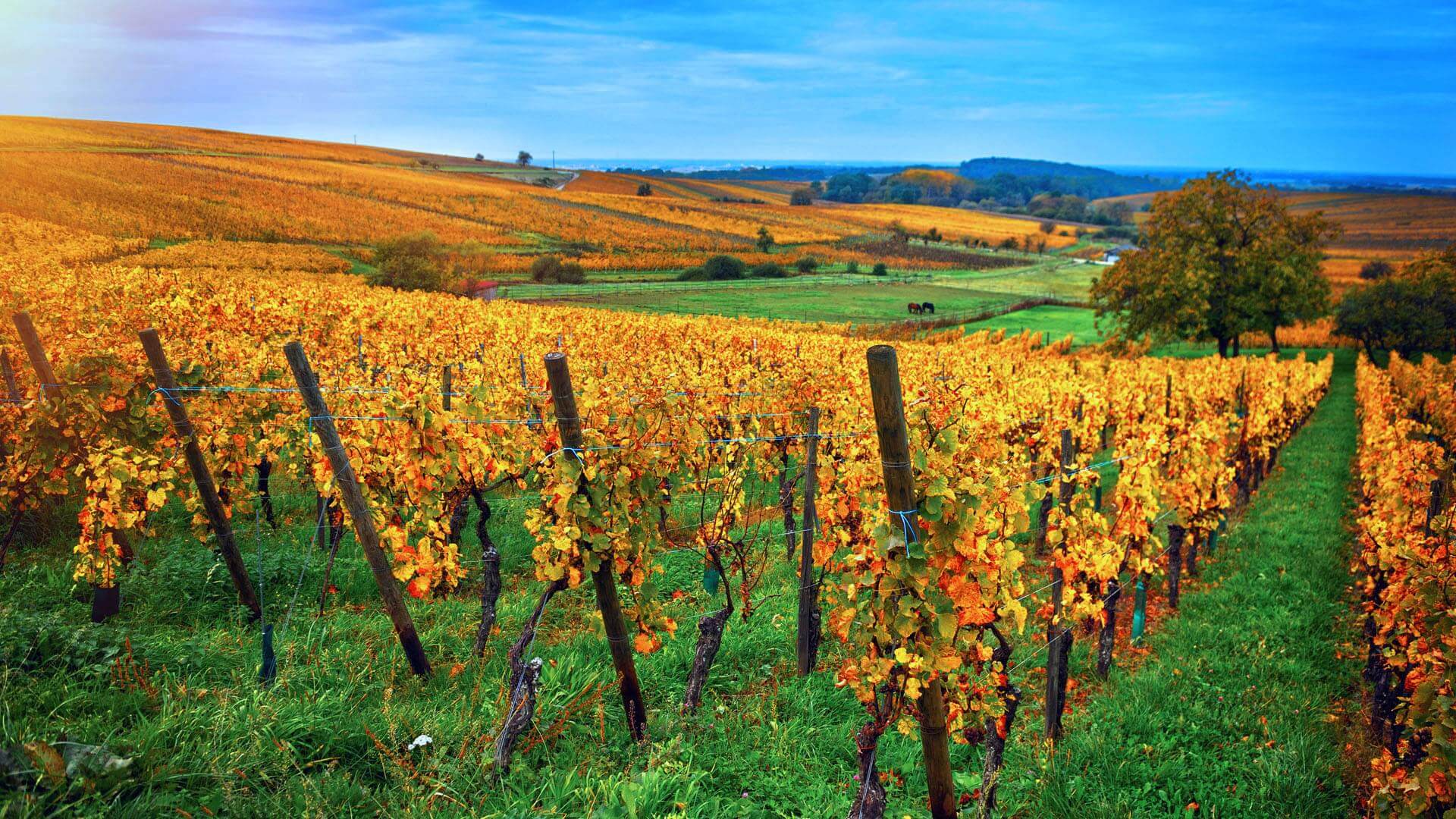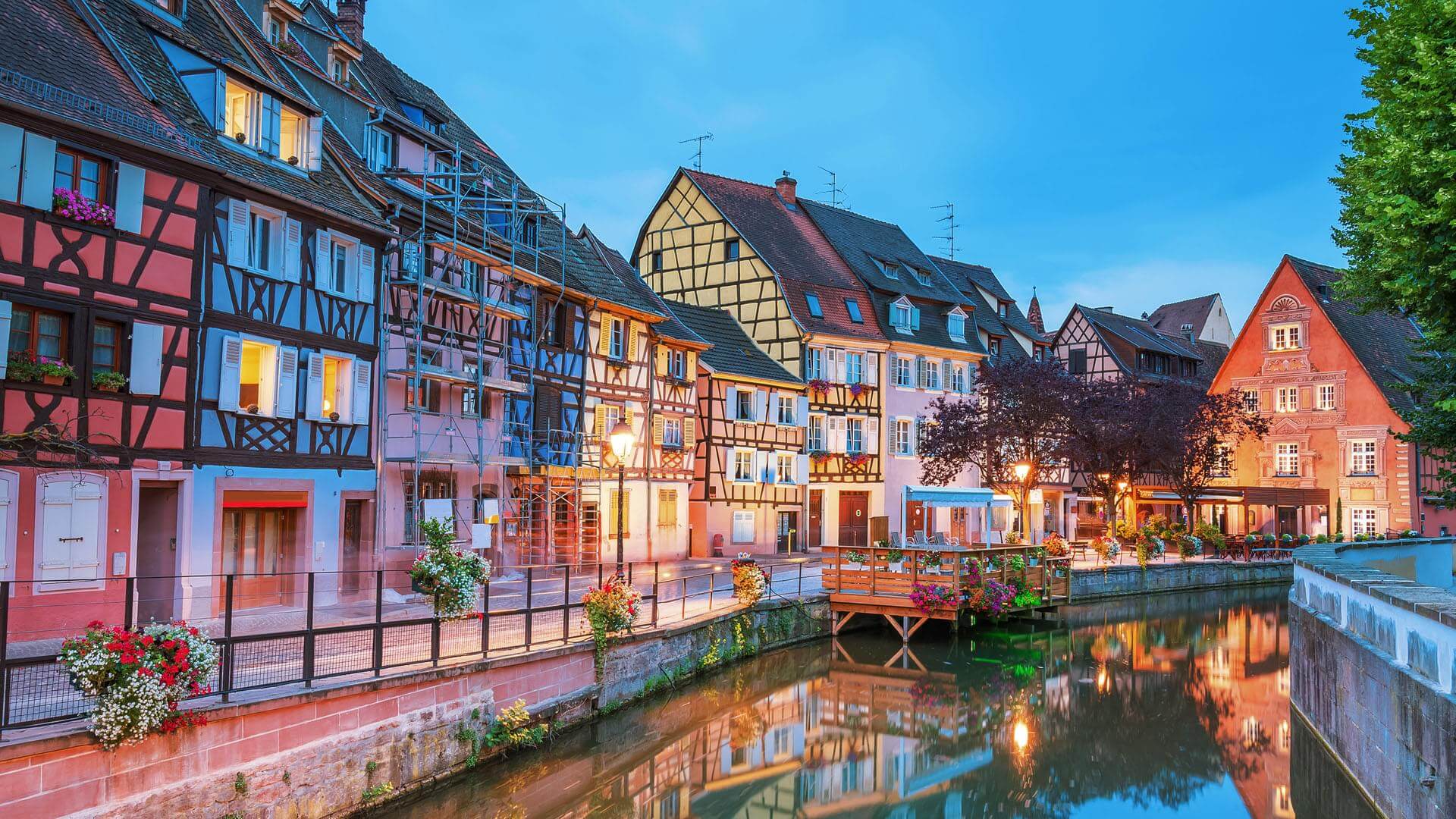The Dry, the Sweet and… the Ugly
The history of Alsace can be painted with one sentence: a granny from the Trimbach manor lived for 103 years, never left her home village and changed nationality four times. Alsace – the borderline territory – passed from Germany to France and back several times. This has left dramatical traces on the traditions, national cuisine and the peculiarities of the local wines: this region has soaked up both the German and the French cultural traditions.
Alsace lies in the east of France. From the north it’s fenced by the high Vosges Mountains, on the east – by the Reine. The river valley has its own special microclimate, and the mountains protect the region from the western winds and rainfalls. The low levels of precipitation in Alsace can only be compared to the torrid Languedoc, while the vineyards’ position brings the Burgundian Côte d’Or to mind – they stretch for 113 km from north to south, and for just 2-3 km from west to east. The vines here receive a lot of sunlight thanks to the eastern exposure, while the sun can shine for weeks without break.


The most famous Alsace wines are made out of three grape varieties: Riesling, Gewürztraminer, Pinot Gris and Muscat. Less often is the use of Klevener, Auxerrois, Chardonnay, Chasselas and Sylvaner.
Another vital element for understanding the Alsace wines is that two classifications co-exist side by side here: the season of harvest system, widespread in Germany, and the Grand Cru system, typical for France. The German system isn’t followed strictly (as is indeed the case in Germany itself), and initially it’s hard to realise if the wine you bought has some residual sugar or if it’s completely dry. The French system did not bring everyone in agreement either. Initially, in 1983, only 25 best vineyards held the Grand Cru status, but thanks to the local cooperatives’ machinations, another 26 lots were added to the classification. Following that, many notable Alsace winemakers stopped indicating the Grand Cru status on the bottle collars, as they considered the new classification unfair: the wines produced by their neighbours did not measure up to their own.
Another big fault with the French system is that the grape variety is assumed to prevail over everything else. An outstanding winemaker Jean-Michel Deiss maintains that terroir is of utmost importance in creating a great wine – not the grape variety. Nobody indicates the variety split on the collars of wines from Margaux or Vosne-Romanée, but these names tell far more about wine than a grape variety. Jean-Michel himself creates wines from the assemblage of different varieties which grow on the best soils of Alsace, and they are truly great.
As we can see, Alsace is multi-faceted in its history, double classification and choice of grape varieties – that’s why the wines of this region are quite different both in quality and in sugar level. To find true wine here, you have to really make an effort.
Wines
- Riesling Clos Ste Hune-Trimbach
- Gewurztraminer SGN-Marcel Deiss
- Mambourg -Marcel Deiss
- Riesling Rangen de Thann Clos Saint Urbain -Zind-Humbrecht
- Riesling Sommerberg -Albert Boxler
- Riesling Goldert La Chapelle Clos Saint-Imer-Ernest Burn
- Pinot Gris Brand -Albert Boxler
- Riesling Cuvee Theo Clos des Capucins-Weinbach
- Riesling Brand -Zind-Humbrecht
- Pinot Gris Sommerberg -Albert Boxler
- Riesling Herrenweg de Turckheim-Zind-Humbrecht
- Pinot Gris Reserve Personnelle-Trimbach
- Riesling Vorbourg-Pierre Frick
- Pinot Gris Cuvee Lawrence-Weinbach
- Riesling-Marcel Deiss
- and 5 more wines...

0 Comments